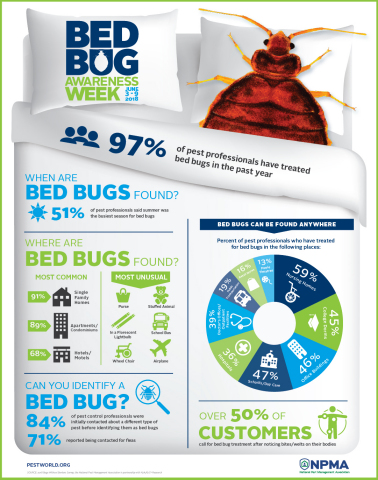Handling Rat Infestations: Insights Into Rat Psychology
Handling Rat Infestations: Insights Into Rat Psychology
Blog Article
Content Composed By-Wynn Doyle
When it pertains to rodent control, comprehending common rodent behavior is essential to successfully managing invasions. Did you understand that rats have some fascinating nesting routines that might stun you? By exploring their intricate actions, you can obtain valuable understandings right into how to take on rodent concerns in a more calculated and reliable way. So, let's unravel the mysteries behind these animals' actions and learn how to outmaneuver them in your rodent control initiatives.
Rat Nesting Habits
When observing rodents in their natural environment, you'll discover that they actively seek products to construct their nests. Rodents, such as computer mice and rats, are resourceful creatures that make use of a range of items like branches, leaves, paper, and material to build their homes. https://wildlife.utah.gov/about-us/contact-dwr.html in their nest-building procedure, often lining their nests with softer products like fur or plumes to produce a cozy environment.
Rats like to build their nests in concealed and secure areas to shield themselves and their young from predators. Usual nesting areas include wall tooth cavities, attics, cellars, and even within insulation materials. By constructing their nests in these secluded locations, rodents can securely elevate their children far from potential threats.
It is important to understand the nesting behaviors of rodents when executing control actions. By disrupting their nests or eliminating materials, you can discourage rats from developing a visibility in your house or residential or commercial property. Appropriate hygiene and sealing entrance points are also critical action in protecting against rodent infestations.
Rodent Feeding Patterns
After observing rodents' nesting habits, it becomes obvious that their feeding patterns play a vital duty in their lives and habits. Rats, consisting of mice and rats, are opportunistic feeders, indicating they'll consume whatever food resource is conveniently offered. They're primarily nocturnal animals, liking to forage for food throughout the cover of evening to stay clear of predators.
Rats have a varied diet regimen, ranging from grains, seeds, fruits, and veggies to bugs, nuts, and even small animals. This adaptability in their food options permits them to flourish in numerous settings, consisting of urban areas where human food resources are abundant.
Their feeding patterns aren't just driven by cravings yet additionally by the demand to stock food for times of shortage. This habits is particularly noticeable to prepare for winter months or when nesting. Rodents are known to hoard food in their nests or burrows, ensuring a consistent food supply. Comprehending their feeding patterns is important in executing efficient rodent control measures to disrupt their food sources and prevent problems.
Rat Movement and Travel
Rats navigate their environments with dexterity and stealth, using their keen detects to relocate swiftly via their environments. These creatures are experienced climbers, able to scale walls and upright surface areas easily. They can additionally squeeze through surprisingly little openings, making it crucial to seal off any kind of prospective access factors in your home.
When it involves traveling, rodents often tend to adhere to familiar courses, producing routes along wall surfaces or skirting the sides of spaces. They're creatures of habit, usually staying with these established paths as they forage for food or discover their surroundings.
Rats are known for their nocturnal practices, so you may hear them hurrying about in the evening as they look for food and water. Their motions fast and irregular, permitting them to dart in and out of view in the blink of an eye.
Understanding just how rats relocate and travel can assist you determine prospective invasion locations in your home and take positive steps to prevent these insects from obtaining a footing.
Conclusion
As you work to control rodents in your home, keep in mind that understanding their actions is key. By recognizing their nesting behaviors, feeding patterns, and activity, you can properly protect against invasions.
Coincidentally, by taking aggressive procedures to remove food sources and seal entry points, you can disrupt their acquainted courses and require them to seek brand-new places, eventually reducing the probability of rodent presence in your living spaces.
